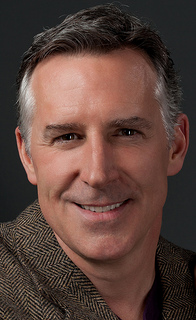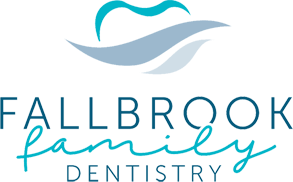December 14th, 2022

Unless you're aware of the signs and symptoms of gum disease and how it's caused, it's possible that you may have unknowingly developed it. Often painless, gum disease -- or periodontal disease -- becomes progressively more serious when left untreated. As you learn more about the common causes of gum disease, you'll be better-equipped to maintain the best oral health possible.
Gingivitis & Periodontitis: Common Causes of Gum Disease
- Bacteria & Plaque. Bacteria in the mouth creates a sticky film over the teeth. Good hygiene practices help remove the bacteria and the plaque they cause. When plaque is not removed, it develops into a rock-like substance called tartar. This can only be removed by a dental professional.
- Smoking & Tobacco. If you're a smoker or use tobacco, you face a higher risk of developing gum disease. Additionally, tobacco use can lead to stained teeth, bad breath, and an increased risk of oral cancers.
- Certain Medications. Some medications that are taken for other health conditions can increase a person's risk of developing gum disease. If you take steroids, anti-epilepsy drugs, certain cancer therapy medications, or oral contraceptives, speak to Dr. Jeffery Spahr and Dr. Janna Spahr about how to maintain healthy gums.
- Medical Conditions. Certain medical conditions can impact the health of your gums. For instance, diabetics face an increased risk of gum disease due to the inflammatory chemicals present in their bodies. Always talk to our team about other health conditions to ensure we take that into account when treating you.
Take a Proactive Stance
Good oral hygiene practices and regular visits to our Lincoln, NE office can help you eliminate or reduce the risks of developing gum disease. A thorough cleaning with your toothbrush and dental floss should take about three to five minutes. Brush your teeth a minimum of twice per day and floss at least once each day. Keep these tips in mind and you’ll be ready to prevent gum disease.
December 14th, 2022

At Fallbrook Family Dentistry, we have patients coming in asking us why a taste of ice cream or a sip of coffee becomes a painful experience, or why brushing or flossing makes them wince or cringe. The answer, usually, is sensitive teeth. Tooth sensitivity typically occurs when the underlying dentin layer of the tooth is exposed in the oral cavity, and most people experience tooth sensitivity at some point in their lives.
So, why do people experience sensitivity and how do you know if tooth sensitivity is something to be worried about? The most common cause of the sensitivity is exposure of the dentin, which is the layer surrounding the tooth’s nerve. Contributors to tooth sensitivity include teeth whitening and dental work such as fillings, periodontal treatment, and the placement or adjustment of braces. These are temporary and should be of no concern.
Permanent hypersensitivity, however, may require treatment at Fallbrook Family Dentistry. The first step is to determine the cause, and that begins with a visit to our Lincoln, NE office.
The reasons your teeth may become sensitive vary, but possible causes include:
- Tooth decay (cavities) near the gum line
- Cracked or fractured teeth
- Fillings that are worn
- Gum (periodontal) disease, or recession of the gums
- Worn tooth enamel
- Brushing too hard
- Consuming acidic foods
Dr. Jeffery Spahr and Dr. Janna Spahr and our team at Fallbrook Family Dentistry want you to know that sensitive teeth can be treated, and the type of treatment will depend on what is causing the sensitivity. Dr. Jeffery Spahr and Dr. Janna Spahr may suggest one the following treatments:
- Desensitizing toothpaste, which contains ingredients that seal off the microtubules inside the exposed dentin to reduce tooth sensitivity
- Fluoride gel, which strengthens compromised tooth enamel, helps prevent tooth decay, and decreases hypersensitivity of the teeth
- A crown, inlay, or bonding, which is used to treat tooth decay and prevents sensitivity
- A surgical gum graft. If gum tissue has been lost from the root, this procedure will protect the root and reduce sensitivity.
- Root canal: If you are experiencing severe and persistent sensitivity which cannot be treated by other means, Dr. Jeffery Spahr and Dr. Janna Spahr may recommend you undergo a root canal to eliminate the problem.
If you are experiencing tooth sensitivity, give us a call today so that Dr. Jeffery Spahr and Dr. Janna Spahr can provide you with some much-needed relief!
December 7th, 2022

If your teeth don't line up like they used to any more, you may be suffering from temporomandibular joint disorder, often called TMD. This is a term that can actually be applied to any condition that occurs because the temporomandibular joint (TMJ) is inflamed.
The temporomandibular joint is essentially the hinge that holds your lower jaw to your skull, and when it is inflamed or damaged in any way, it can be extremely painful. You have two temporomandibular joint, one on each side of your jaw, and it is typical to experience TMD in both sides at the same time.
Shifting of the Teeth
The reason that your teeth may not line up as they once did is that the ball and socket joints are often out of alignment and, as mentioned above, often very inflamed as a result. In order to correct the problem, Dr. Jeffery Spahr and Dr. Janna Spahr may prescribe dental orthotics such as a lower jaw splint.
Sometimes, the wisdom teeth can play a role in the shifting of the teeth as well. If shifting wisdom teeth is combined with TMD, it may be necessary to have your wisdom teeth removed. Dental splints may follow if your teeth don't shift back to their proper positions on their own.
TMD is certainly a difficult thing to deal with, so if you experience your teeth shifting, scheduling an appointment at our Lincoln, NE office is the smartest course. We want to help you get your smile back, so give us a call anytime.
December 7th, 2022

Are you looking to improve the appearance of your front teeth? Dental veneers are widely used to improve the appearance of front teeth and are a much more conservative option than a full dental crown. Veneers can be used to improve the appearance of staining, large gaps, large fillings, chipped teeth, or overall shape. Veneers are a thin covering over the front and biting end of the tooth used to restore the beauty of a smile. Over the years we have helped many patients who opted for veneers and now have the confidence to smile again.
Dental veneers are made in a lab from long-lasting porcelain materials. The shade can be chosen to a desirable color to whiten the appearance of your smile. Dental veneers are usually placed on the anterior, or front teeth, where the chewing forces are not as hard as the back teeth. The process of placing veneers is relatively easy requiring only two dental appointments. In some cases, only one appointment is needed. It depends on the fabrication process.
The first appointment is to “prep” the teeth and take an impression to be sent to a lab to fabricate the veneers. Veneers are fairly conservative in the preparation as it requires a small amount of space to be created on the face (front), bottom, and sides of each tooth to allow space for the veneer to be placed and look natural. You will leave the office with temporary veneers for the next week or two while the permanent veneers are being made.
The second appointment is to place the veneers and make minor adjustments if needed. What a difference it makes in the appearance of the teeth! If you’re interested in learning more, give Dr. Jeffery Spahr and Dr. Janna Spahr a call today!






